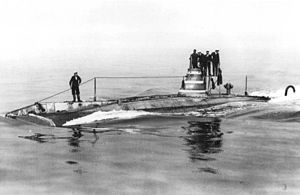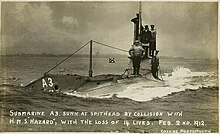HMS A2 was an A-class submarine built for the Royal Navy in the first decade of the 20th century.

HMS A6 was an A-class submarine built for the Royal Navy in the first decade of the 20th century.

HMS A11 was an A-class submarine built for the Royal Navy in the first decade of the 20th century. After surviving World War I, she was sold for scrap in 1920.

HMS A7 was an A-class submarine built for the Royal Navy in the first decade of the 20th century. She sank in a training accident in 1914 with the loss of her entire crew. Efforts to salvage her failed and her wreck is a protected site. Diving on her is prohibited without a licence from the Ministry of Defence.
HMS Spiteful was a third-batch S-class submarine built for the Royal Navy during the Second World War.

HMS Salmon was a second-batch S-class submarine built during the 1930s for the Royal Navy. Completed in 1935, the boat fought in the Second World War. Salmon is one of twelve boats named in the song "Twelve Little S-Boats".

HMS D1 was one of eight D-class submarine built for the Royal Navy during the first decade of the 20th century.

HMS C7 was one of 38 C-class submarines built for the Royal Navy in the first decade of the 20th century. The boat survived the First World War and was sold for scrap in 1920.
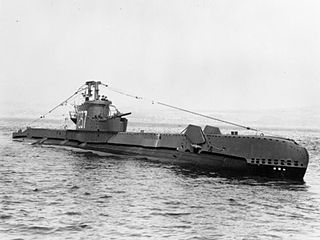
HMS Scythian was a S-class submarine of the third batch built for the Royal Navy during World War II. She survived the war and was sold for scrap in 1960.
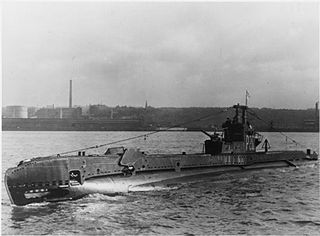
HMS Solent was a S-class submarine built by Cammell Laird and launched on 8 June 1944 of the third batch built for the Royal Navy during World War II. She spent most of her career in the Pacific Far East, often in company with her sister ship, HMS Sleuth. Together they sank fifteen Japanese sailing vessels and the Japanese auxiliary minesweeper Wa 3. She survived the war and was sold for scrap in 1961.
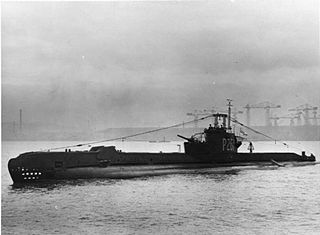
HMS Sleuth was a S-class submarine of the third batch built for the Royal Navy during World War II. She survived the war and was sold for scrap in 1958.

HMS Spur was a S-class submarine of the third batch built for the Royal Navy during World War II. She survived the war and was sold to Portugal in 1948.

HMS Sterlet was a second-batch S-class submarine built during the 1930s for the Royal Navy. Completed in 1938, the boat fought in the Second World War. The submarine is one of the 12 boats named in the song Twelve Little S-Boats. Thus far she has been the only ship of the Royal Navy to be named Sterlet.
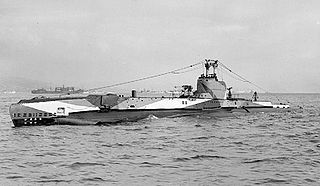
HMS Sealion was a second-batch S-class submarine built during the 1930s for the Royal Navy. Completed in 1934, the boat fought in the Second World War.
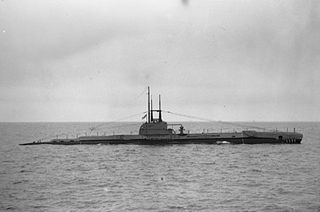
HMS Seawolf was a second-batch S-class submarine built during the 1930s for the Royal Navy. Completed in 1936, the boat fought in the Second World War.

HMS L9 was an L-class submarine built for the Royal Navy during World War I. The boat survived the war and was sold for scrap in 1927.
HMS L24 was a L-class submarine built for the Royal Navy during World War I. The boat was not completed before the end of the war and was sunk in an accidental collision in 1924.
HMS L26 was a L-class submarine built for the Royal Navy during World War I. The boat was not completed before the end of the war and was one of three L-class boats to serve during World War II. She was sunk as a target in 1946.
HMS B2 was one of 11 B-class submarines built for the Royal Navy in the first decade of the 20th century.

HMS Rainbow was a Rainbow-class submarine built for the Royal Navy during the 1930s.
